On Friday, July 14th, MBHI staff got out of the office and into the field for a staff bug day! Between summer camps, programs, and of course, preparing for our big move, we decided to give ourselves a break and do what we do best: look for bugs. We spent the afternoon at the CSKT (Confederated Salish and Kootenai Tribes) Bison Range, and while the bison were a plus, we were there for the bugs.
The following bug photos were all captured by our expert bug photographer and Development Director, Glenn Marangelo.

River Jewelwing
Calopteryx aequabilis
With their metallic bodies and often dark marking on the wings, Jewelwings (genus Calopteryx) are show-stopping stunners. River Jewelwings of either sex can’t be mistaken for any other Rocky Mountain damselfly. Adults emerge in the last half of June or July and may be on the wing into September. Males are quick to defend their territories along the edges of a stream and will chase off rivals. They perform elaborate courtship displays, including slowly alternating wing beats and flinging themselves onto the water’s surface. Females may venture a foot or more below the water’s surface to lay their eggs in submerged plant stems, staying submerged for 40 minutes or more.
Tree Cricket
Oecanthus sp.
If you find a green tree cricket in North America, you can be certain it is in the genus Oecanthus. Most can be identified to species by examining the markings on the underside of the first two antennal segments. Male tree crickets “sing” using their two front wings. A sharp edge or “scraper” is located on the upper surface of the lower wing and is rubbed against a row of bumps known as the “file” on the underside of the upper wing (view a scraper and file here). Chances are you’ve heard their loud chirp or trill before. Males have a cavity on their upper back, sometimes called a “honey pot.” They secrete a liquid into the pot that attracts females, which feed upon the liquid. This perfectly positions the female for mating.
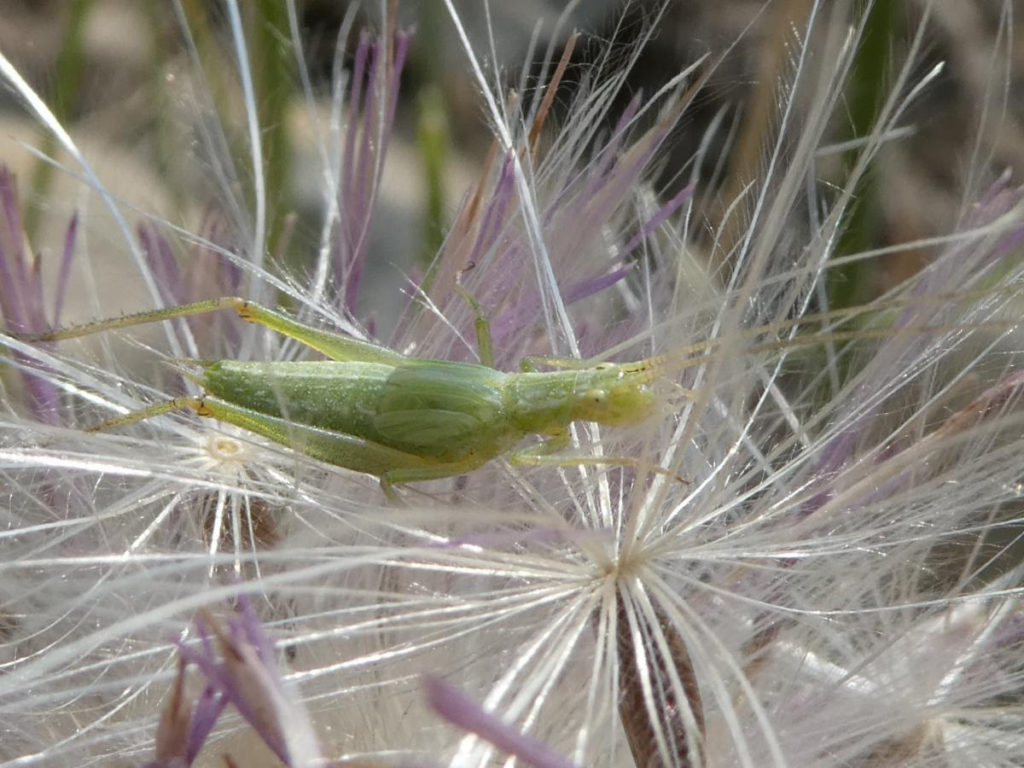

Robber Fly
Stenopogon sp.
The robber flies were busy during our afternoon at the bison range; this individual managed to snag a skipper butterfly for lunch. Others were spotted going after any insect they could find, including bees, beetles, and other flies. Robber flies are so-named for the predatory behavior. They lie in wait until they spot a prey item, then ambush it and snatch it mid-flight.
Monarch
Danaus plexippus
Is there any insect more iconic than the monarch butterfly? Even the caterpillars are recognizable for their striking yellow, black, and white patterning, a stark warning to predators of their unappetizing nature. We were thrilled to find this individual (along with one other) on a milkweed plant at the end of our day. Monarch caterpillars sequester toxins from their host plant, milkweed, which makes them distasteful to predators.

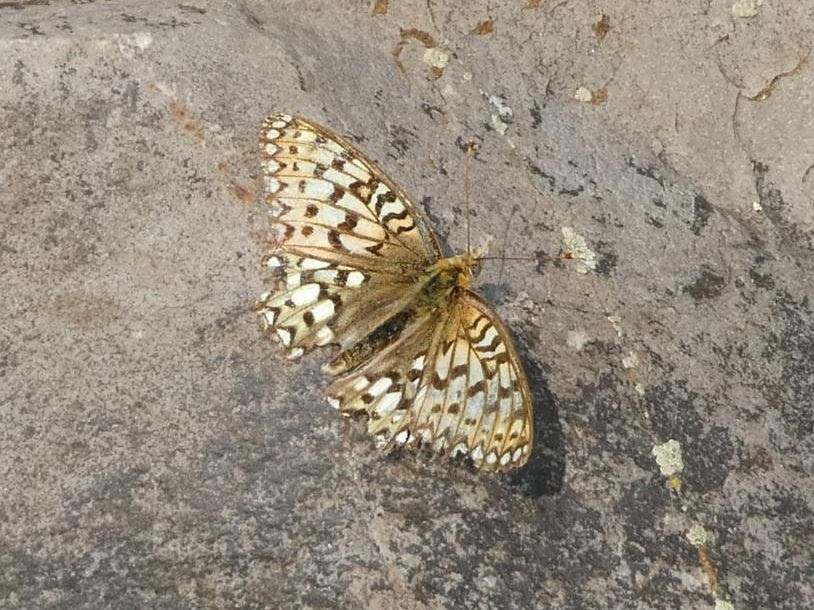
Greater Fritillary
Speyeria sp.
Greater Fritillaries are large, unmistakable butterflies found across North America. Identification to species usually requires a look at the underside of their wings, but this individual’s age (evidenced by the tattered wings) may make ID difficult regardless. This one landed on a rock to sun itself while we were enjoying lunch at the picnic area.
Burning Blister Beetle
Epicauta sp.
Adults in this genus (Epicauta) are velvety and come in gray, tan, or black, or a combination thereof. Larvae feed on egg capsules of grasshoppers, adults are occasional crop pests. Like other blister beetles, if they are handled and squeezed they employ a chemical defense that will blister your skin …so better to observe and not touch. They are also highly toxic to animals (humans included). According to the Kaufman Field Guide to Insects of North America, “[Epicauta] Beetles baled with hay have caused the death of horses that unwittingly consumed them.”

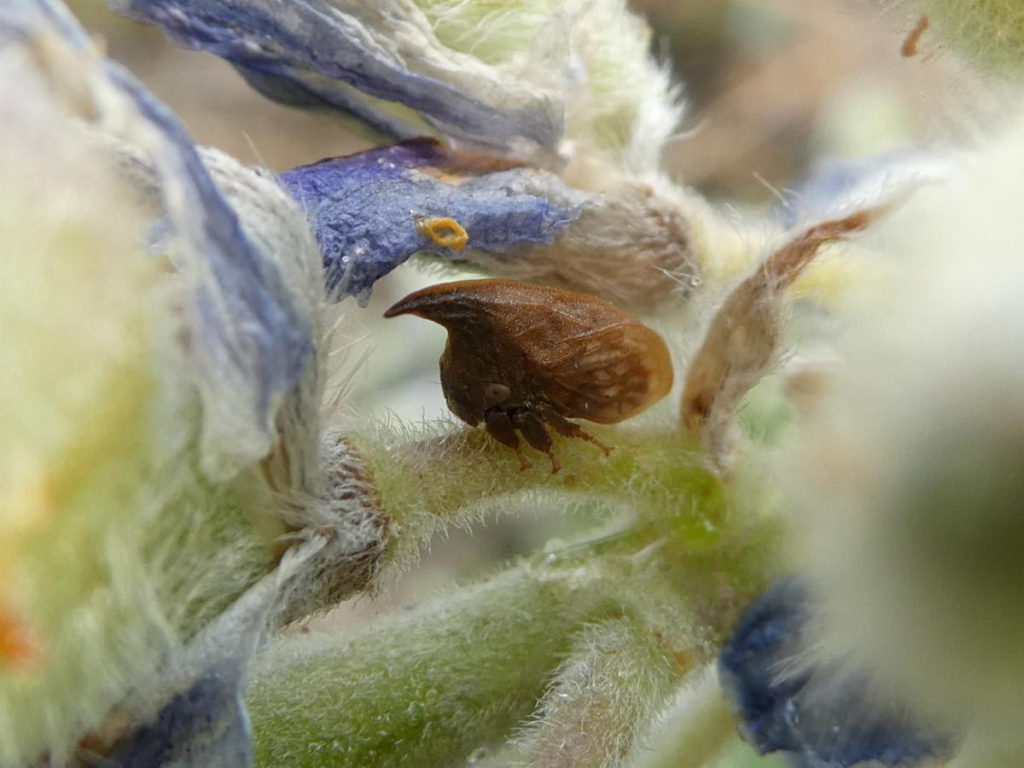
Wide-footed Treehopper
Enchenopa latipes
This treehopper, also referred to as the Eastern Thornhopper, almost perfectly resembles a plant thorn and can be found in large congregations, giving plants a formidable appearance. Upon closer inspection, they will quickly hop away using specialized muscles in their hind legs. Treehoppers feed on plant sap by piercing the stem using their piercing-and-sucking mouthparts. They will secrete a sweet, sugary substance called honeydew as a result of their high-sugar diet, which often attracts ants. Rather than harm the treehoppers, though, ants will tend them like cattle.
Old World Swallowtail
Papilio machaon
The Old World swallowtail is the OG swallowtail, the species from which the name originated. The name stems from the extensions on the hindwing, which superficially resemble the tails of swallows. This species is holarctic, and not restricted to the old world as its common name suggets. In North America, their populations are concentrated in the west and are found from the American southwest to northern Alaska.

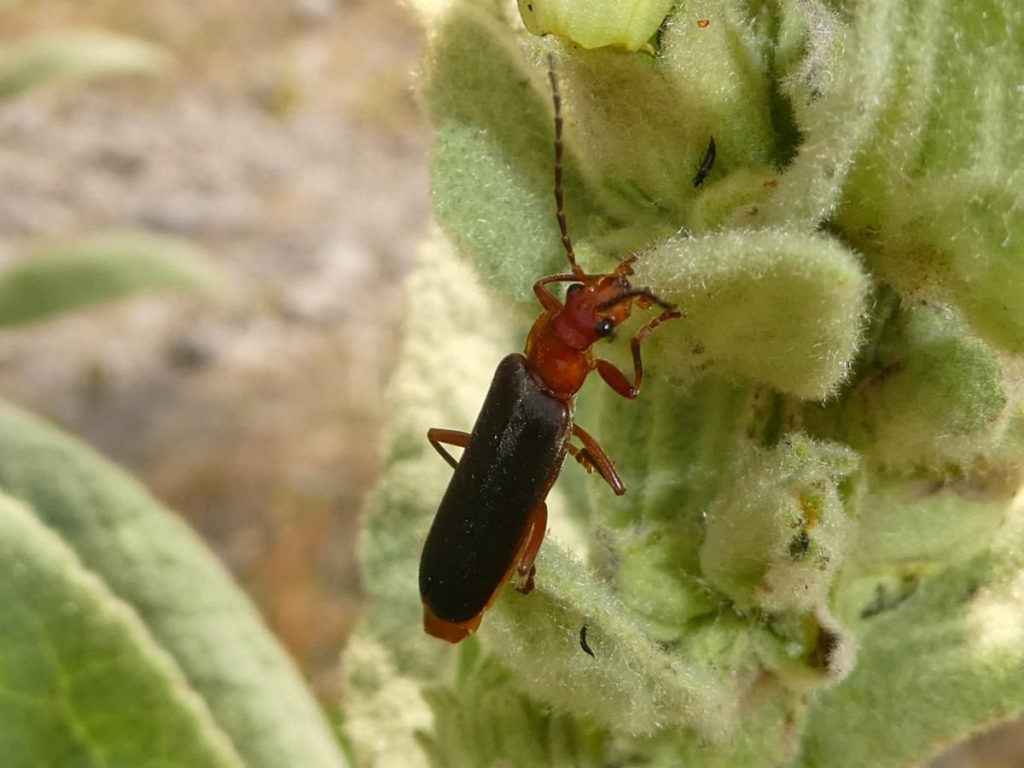
Soldier Beetle
Podabrus sp.
Soldier beetles get their name from one species’ resemblance to the patterns on early British red coats. They are also called “Leatherwings” for their soft, flexible wing covers (elytra). Flat, long, and velvety, soldier beetles have brown to black bodies often marked with red or orange. The bright colors serve as a warning to would-be predators. Both adults and larvae can secrete defensive chemicals from glands at the rear of the abdomen. This particular genus has a distinct “neck,” where the head narrows behind the eyes. Adults are frequently found on leaves and flowers, where they feed on other insects, as well as nectar and pollen. Larvae can also be predators or plant-eaters.
Western Branded Skipper
Hesperia colorado
As with other species of skippers, there can be a lot of variation in pattern and coloration. Once considered a subspecies of the Common Branded Skipper (Hesperia comma), most resources now consider the Western Branded its own species. They can be found in sunny, open areas—forest openings, meadows, fields, roadsides, and alpine habitats from mid July to late September. Adults sip nectar from flowers like this vibrant Dotted Blazing Star (Liatris punctata), as well as asters and goldenrods. Larvae feed on various grasses including fescue (Festuca), brome, bluegrass, needlegrass, and beardgrass. The next generation will overwinter as eggs.
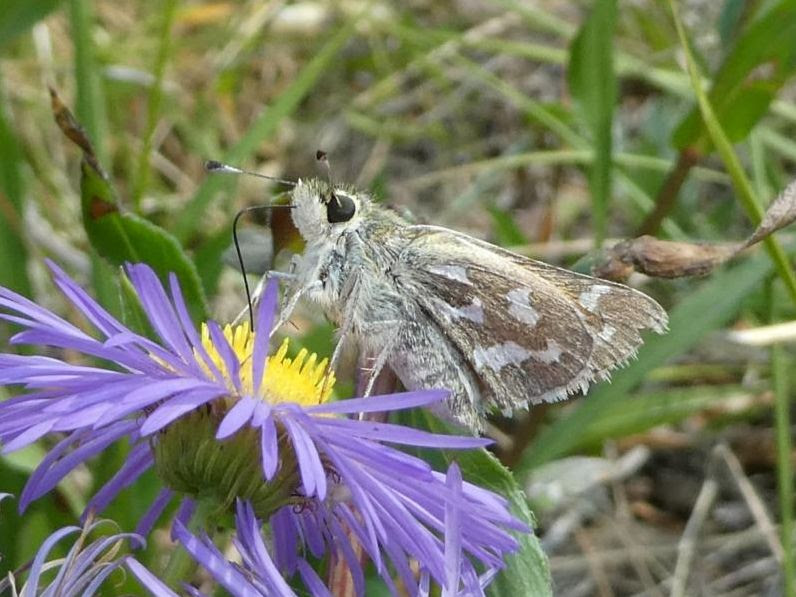
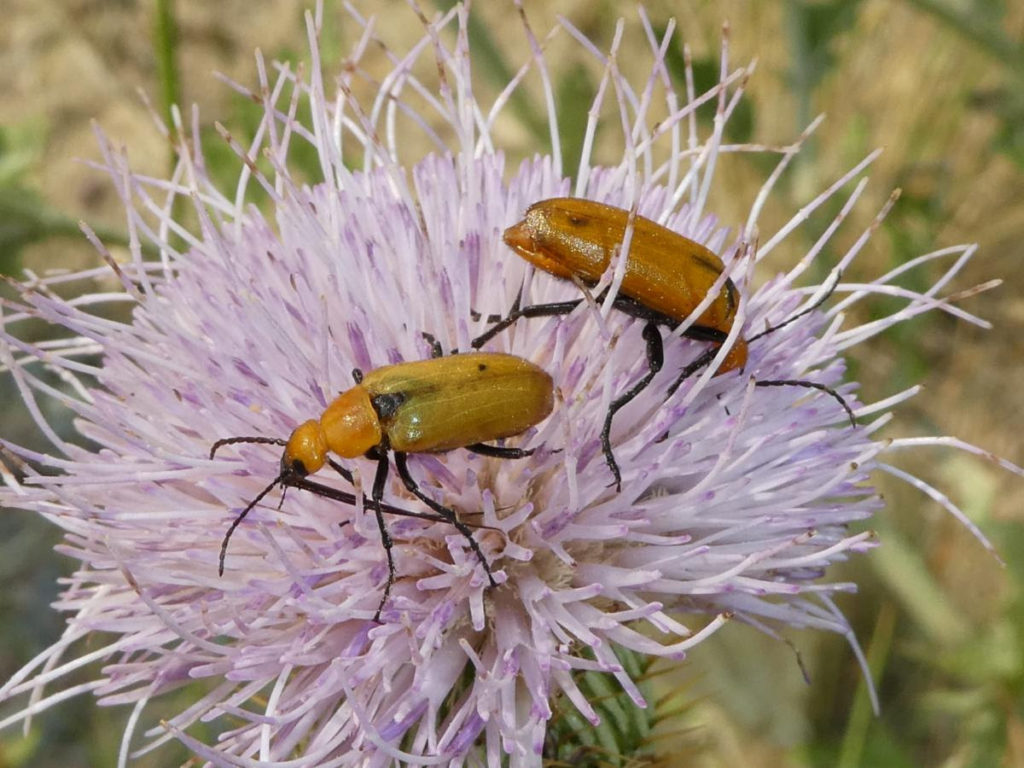
Blister Beetle
Nemognatha sp.
Blister beetles in this genus can be found worldwide. In the US, they are more diverse in the west. There are two very different things about these blister beetles — 1) they have a very long mouthpart (like a straw) that’s used to suck nectar from flowers; and 2) the females lay eggs on flowers. The emerging larvae parasitize bee nests and will hitch a ride to a nest (and their food) on a bee that visits the flowers.
Spur-throat Grasshopper
Melanoplus sp.
Melanopus are the most diverse genus of grasshoppers, and as such, only a few species can be definitively identified using external features. Most species ID requires dissection of the genitalia. Their eggs survive the winter, with the nymphs hatching by late April to early May. They are polyphagous—meaning they are capable of eating a wide variety of food and will cannibalize their own kind in times of food shortage. These hoppers (along with several other species) were particularly active that day.

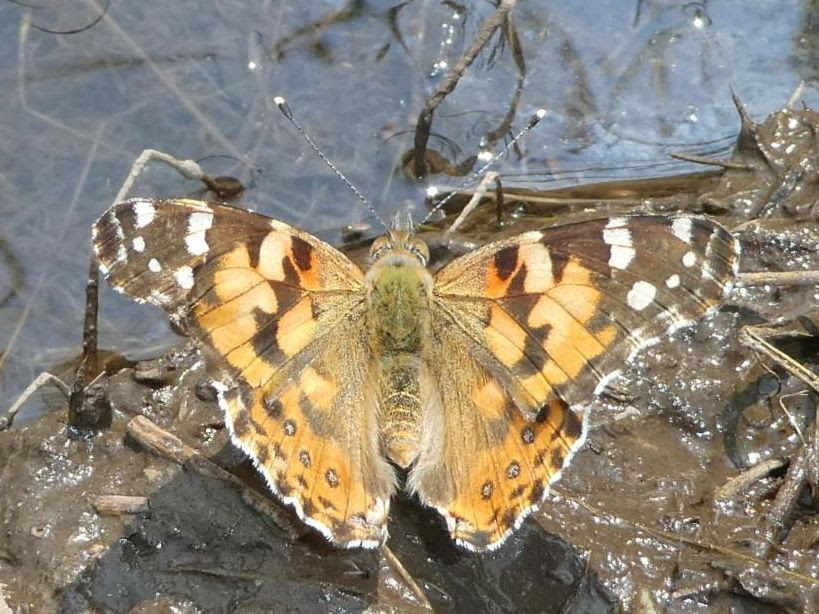
Painted Lady
Vanessa cardui
Painted ladies are popular as classroom pets, and are often available for purchase as caterpillars so students have the opportunity to observe their life cycle. Their popularity is thanks in large part to their cosmopolitan nature: painted ladies are found in temperate zones on every continent except Antarctica and South America.
European Skipper
Thymelicus lineola
This skipper was accidentally introduced to North America in 1910 in Ontario, Canada. They have since become well established in the east and have more recently become established in the west (Colorado, Idaho, Montana, and British Columbia). Timothy (Phleum pratense) and other grasses are the primary host plant. Because of this, their range is still expanding — perhaps due to the relocation of eggs in hay shipments.

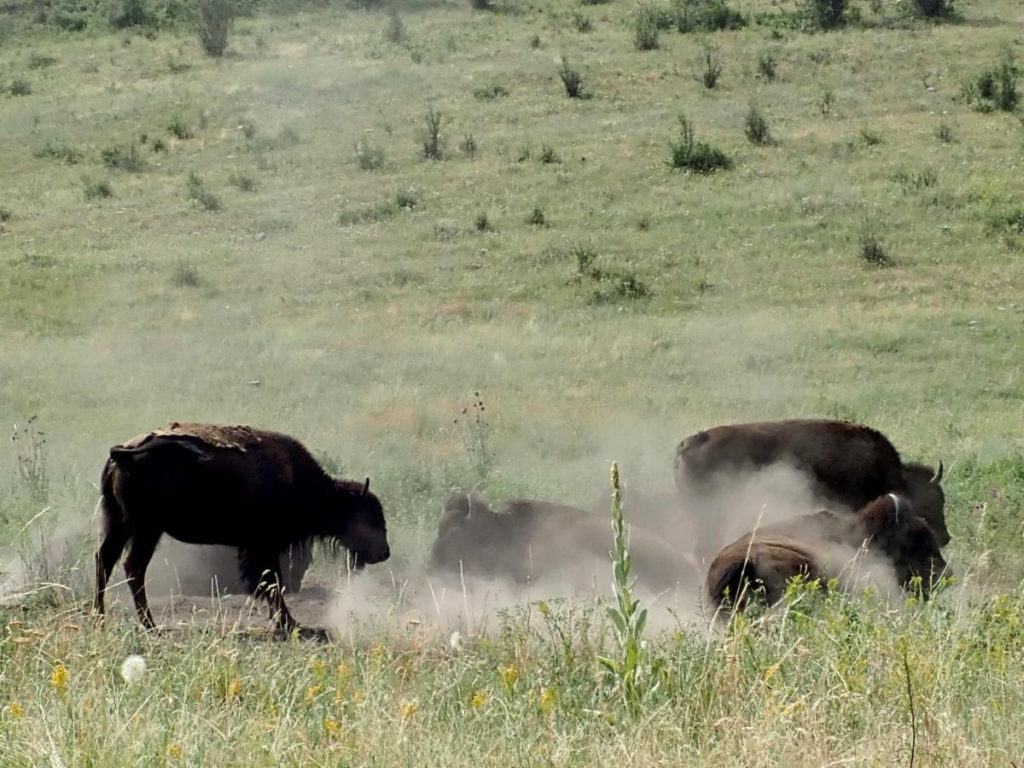
And of course, we saw some bison too.